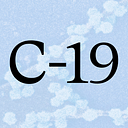Turning a Vaccine Into Vaccination
Vaccines are on the horizon, but the last mile of vaccination — getting two doses into most people—is a Herculean task
When the announcement was made that Jonas Salk developed a highly efficacious polio vaccine, the nation rightly erupted in joy. The same phenomenon is happening now (though not with ticker-tape parades) with news of highly efficacious results with the first Covid-19 vaccines.
Regulatory approval of one vaccine in the U.K. has already occurred and the U.S. will likely soon follow suit. However, it is important to remember that a vaccine is not a vaccination. Make no mistake: These innovative vaccines are lights at the end of the long, dark tunnel, but we are still in a tunnel and the last mile, (i.e. vaccination) — specifically getting two doses into a majority of individuals — is a Herculean task.
In recent history, there has not been a vaccination delivery and distribution program attempted with this rapidity and size. The 2009 H1N1 pandemic vaccination program is probably the closest example and was plagued with many setbacks that we cannot afford with SARS-CoV-2, a much more unforgiving virus. In 2009, the vaccine was basically the same flu vaccine people get every year and, in a way, was simpler because it contained only one strain instead of the three to four that are present in regular seasonal vaccines. Myriad issues complicated things, including:
- The fact that the novel virus appeared after vaccine production for the ordinary vaccine had already started
- Getting the virus strain to grow
- Knowing when a given geographic area would get the vaccine
- Matching vaccine availability to peak activity of the virus in a region
Indeed, as a health care worker, I received my vaccine in November 2009 after the virus had peaked.
By investing in manufacturing, logistics, and delivery ahead of time, Operation Warp Speed — one very bright spot in an otherwise bleak pandemic response in the United States — will hopefully stave off some of these problems. Pfizer has already stated, however, that it has had difficulties with the supply chain scale up. The vaccine rollout, which will be directed to key priority groups first, will be further complicated by extreme cold chain requirements for the Pfizer vaccine. These difficult-to-maintain conditions have prompted the creation of freezer farms and dry ice-packed shipments. The Pfizer vaccine can remain at room or ordinary refrigerator temperatures for only a short period of time.
It is important to remember that a vaccine is not a vaccination.
Another factor that cannot be overlooked is the actual plans states have in place to distribute their vaccine allocation. States will need to know when they will receive it, how much they will receive, and how they plan to allocate it. Important questions include how a state should geographically prioritize the allocation to health care workers and nursing home residents. Should vaccines go to hot spots in a state to quell the outbreak or to areas that have been relatively spared to prevent them from becoming hot spots? Among health care workers, should there be a second prioritization — giving the vaccine first to those health care workers who are in direct contact with Covid-19 patients and also themselves at risk for severe disease? How will states accomplish mass vaccination once the vaccine is available to community dwelling individuals? Will they use drug stores, doctor’s offices, hospitals, and high school gymnasiums? How will they announce availability? How will they ensure the return of individuals for their second dose? How will they make sure that people, once a second vaccine is available, come back for the correct second dose? How do we know that people will accept the vaccine? How will we communicate the safety of the vaccine?
Most importantly, are states and local health departments sufficiently funded to accomplish this? The Centers for Disease Control and Prevention estimates that states will need $6 billion to execute this program with less than 5% of that amount already allocated to date.
Lastly, those of us in the field must be proactive with the public detailing the risks and benefits of these vaccines with full transparency. We must set the terms of the debate and not be on the defensive against people who are making arbitrary assertions, spreading lies, and disseminating misinformation about what will be a path-breaking vaccine program.
Vaccines have saved hundreds of millions of lives to date and the Covid-19 vaccine will add substantially to this number — but only with a system that gets into the arms (twice) of the individuals who desperately need it.

